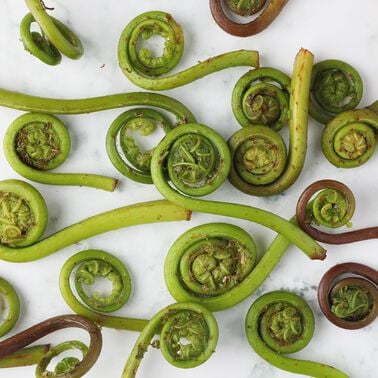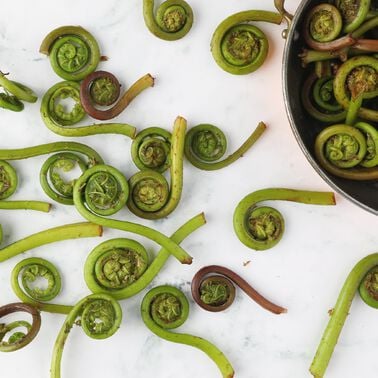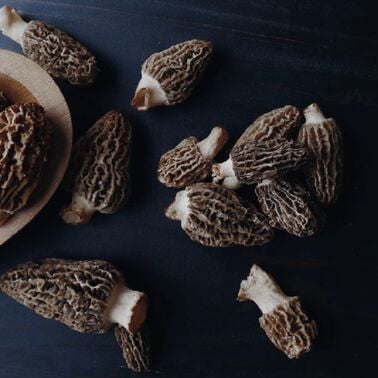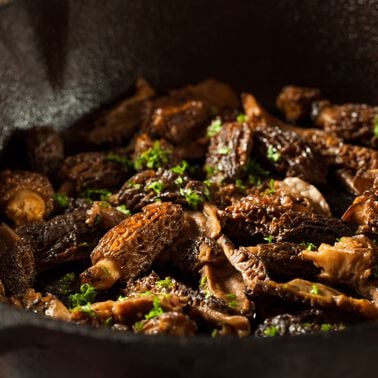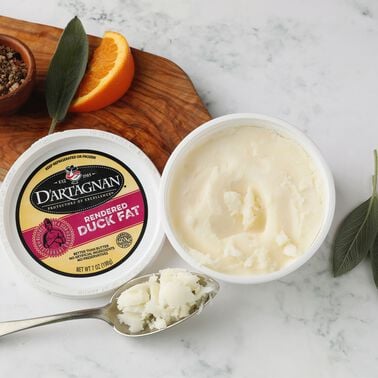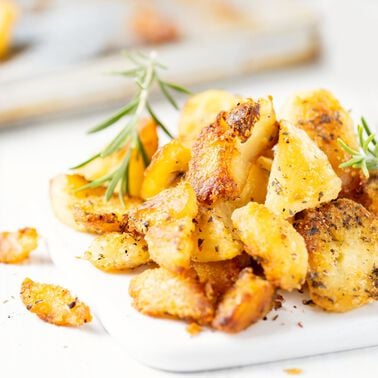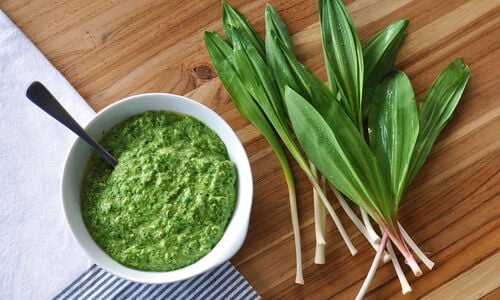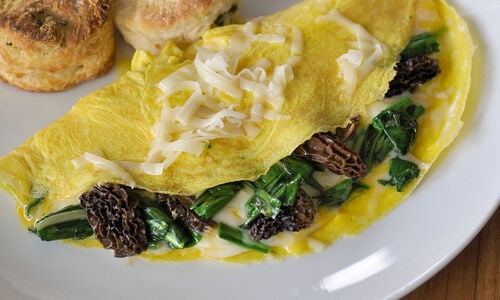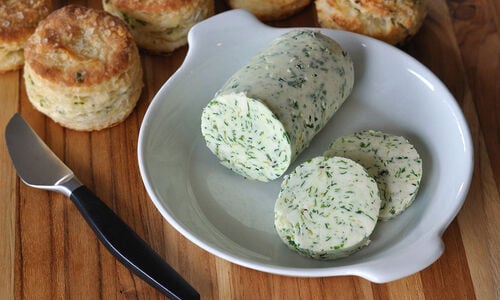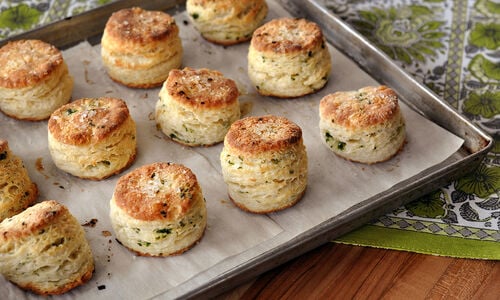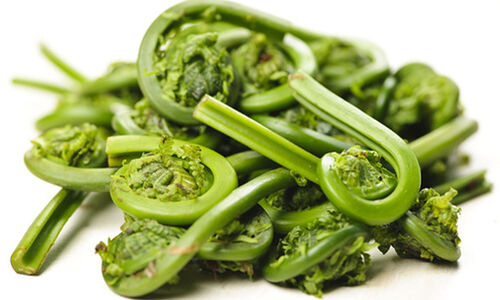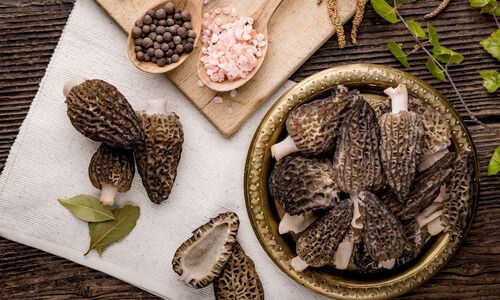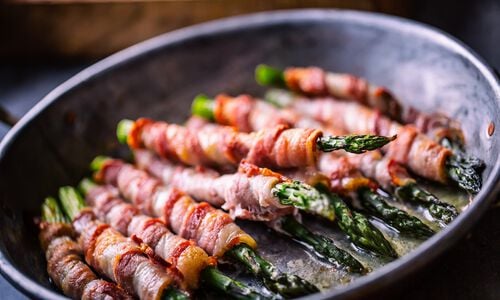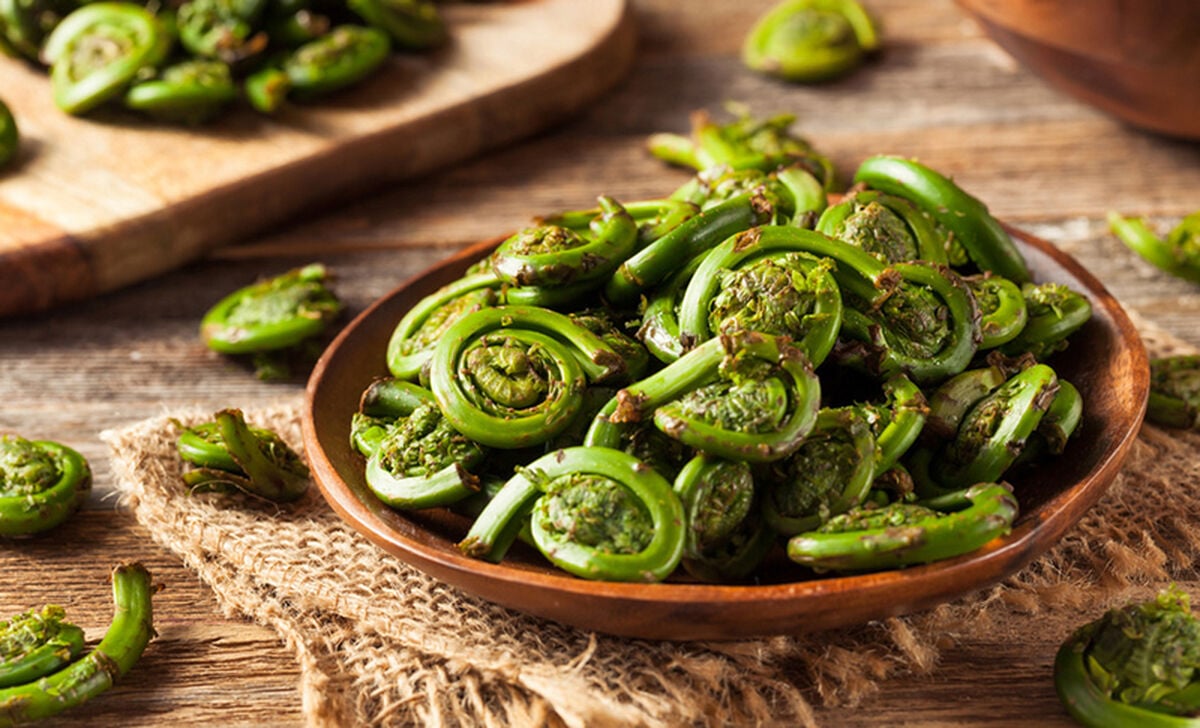
How to Prepare & Clean Fiddleheads
Fiddleheads have brown papery skin that must be removed before eating, and they may have dirt or other detritus from the forest floor clinging to them. Place your fiddleheads in a colander and rinse or spray them with cold water. Then place fiddleheads in a bowl of cold water, let them sit for a few minutes, and then return them to the colander to drain. This should allow the crevices to be thoroughly washed.
If properly washed and stored in a sealed plastic bag, fiddleheads can be stored for as long as a week in the refrigerator. If there is any stem extending from the coil, cut that off before cooking.
Cooking Fiddleheads / Fiddlehead Fern Recipes
Fiddleheads taste green—like the deep, moist green of the forest. Some say they taste a bit like asparagus or green beans, but it’s hard to pinpoint the exact taste of such a special little plant. They are prized for their delicate flavor and crunchy texture. Fiddleheads contain omega-3 and omega-6 fatty acids and a number of other vitamins, including potassium. But they must be cooked properly before they are enjoyed.
The Centers for Disease Control has investigated several food-borne illness cases with fiddleheads and recommends eating them fully cooked as a result. It is best to blanch or boil fiddleheads before sautéing or cooking in other preparations.
Blanching Fiddleheads
To cook, bring salted water to a boil and add the fiddleheads, allowing them to boil for ten to fifteen minutes. After draining them, you can further sauté the fiddleheads to impart a crunchy texture.
To blanch fiddleheads, place them into a pot of almost boiling water; blanching begins when the water comes to a rolling boil after adding the fiddleheads. Remove them after two minutes and cool in an ice bath immediately to stop the cooking.
Sautéed Fiddleheads
Boil, blanch or steam fiddleheads, then drain them and pat dry. Toss them in a hot pan with butter, duck fat, or your favorite cooking oil. Sauté until tender-crisp, adding salt and pepper as desired. Fiddleheads are also quite nice in tempura; again, be sure to pre-cook before breading them.
Try fiddleheads chilled and served on a salad with a vinegar dressing, or tossed with rice or pasta. Just remember to cook them thoroughly, and never eat them raw.
Pickled Fiddleheads
One way to preserve fiddleheads is to pickle them. Just as above, wash, and then boil the fiddleheads for 10 minutes. Drain and rinse with cold water. Your pickling solution can be simple: vinegar, water, salt, garlic cloves, and sugar. Classic pickling spices include black or red pepper, allspice, nutmeg, cinnamon, mustard seed, and celery seed. Bring the pickling liquid to a boil and pour over pre-cooked fiddleheads in pint-sized jars with canning lids. Seal and process for 10 minutes in a boiling water bath canner. Remove the jars and let cool on the counter. When you can handle the jar again, remove the ring to check that the lid is sealed tight.
Freezing Fiddleheads
Another common method of preservation is freezing fiddleheads. Follow the blanching steps described above, and allow fiddleheads to dry thoroughly, and then place in a freezer bags, or better yet, in vacuum-seal bags. Don’t overfill the bags, and if using plastic bags, press out all excess air. Fiddleheads can last all year if properly frozen.
To thaw the fiddleheads, defrost in the refrigerator or submerge in cold water until thawed.
